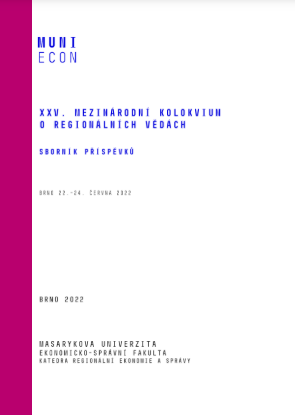EU COHESION AFTER COVID-19: WHAT ARE THE NEW TRENDS FOR THE RESILIENT FUTURE?
EU COHESION AFTER COVID-19: WHAT ARE THE NEW TRENDS FOR THE RESILIENT FUTURE?
Author(s): Michaela Staníčková, Lukáš Melecký
Subject(s): Regional Geography, Health and medicine and law, EU-Accession / EU-DEvelopment
Published by: Masarykova univerzita nakladatelství
Keywords: cohesion; COVID-19; European Union; regional disparities; resilience;
Summary/Abstract: COVID-19 pandemic presents a significant challenge for the entire European Union. National, regional and local communities are on the front line in countering the disease and its socio-economic impact. Solidarity and responsibility across our societies and between Member States are key to overcoming this challenge. COVID-19 intensified and accelerated the debate on the resilience of regional economies not only to respond to exogenous shocks but how to shape viable environments. These are systems that meet today's demands and future challenges. In the first line, especially, the green and digital transitions' potential is highlighted as new drivers of EU growth. New economic, social and territorial disparities may appear without appropriate policy action. The aim is that the cohesion policy should respond to these challenges and, in particular, ensure that place-based, multilevel, and partnership-led approaches continue to improve cohesion while building on synergies and mainstreaming cohesion objectives into other policies and instruments. Via literature review method, the paper aims to summarise the fundamental aspects of the EU Cohesion Policy not only for the programming period 2021-2027 but in the long-term perspectives, i.e., cohesion towards 2050. How will the EU Cohesion Policy help in the future? The transition to carbon-neutrality will transform the EU’s economy. The digital transition is moving forward at different speeds across the EU. The EU Cohesion Policy will become more flexible, drawing on the lessons from the pandemic, to adapt more easily to unexpected shocks, e.g., by a higher flexibility in transferring resources.
Book: XXV. mezinárodní kolokvium o regionálních vědách: Sborník příspěvků
- Page Range: 271-280
- Page Count: 10
- Publication Year: 2022
- Language: English
- Content File-PDF

